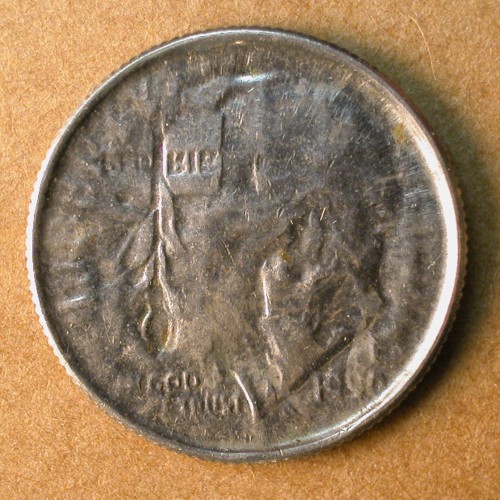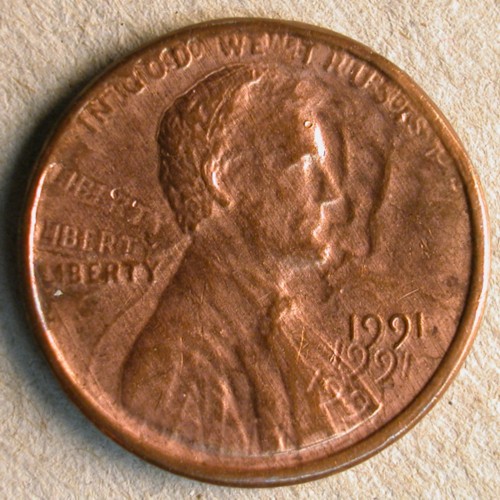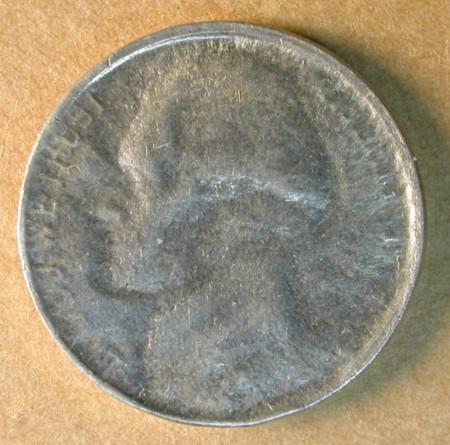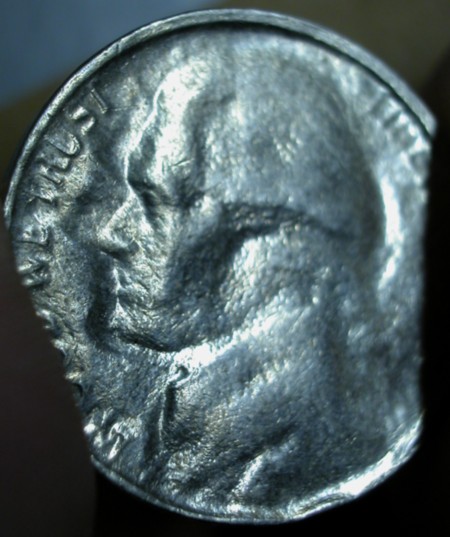PART VI. Striking Errors:
Capped Die Strikes:
Capped Die Doubling:
Incuse
Definition: A late-stage die cap is one whose working face is featureless. Regardless of whether the working face ever carried a design in the first place, the surface is wiped clean after having struck a succession of planchets.
When a coin is struck through a late-stage die cap, a raised ghost image of the obverse design bleeds through the thin floor of the cap. On rare occasions, the coin is also left with incuse images.
A late-stage die cap sometimes clashes directly with the opposite die, picking up a fresh, but incomplete design. This is then transferred to the next few planchets as an incomplete, secondary brockage. This type of brockage is known as a clashed cap strike.

When a late-stage die cap becomes dislodged and shifts laterally or rotates around its vertical axis, it leaves a set of normally-oriented incuse design elements on the next coin it strikes. If it shifts between strikes, then every coin will show additional sets of incuse design elements.


